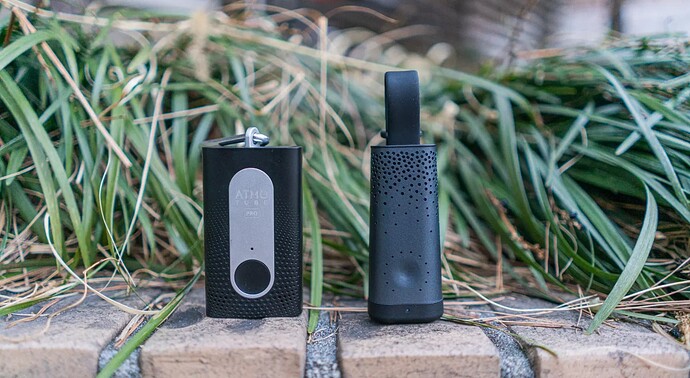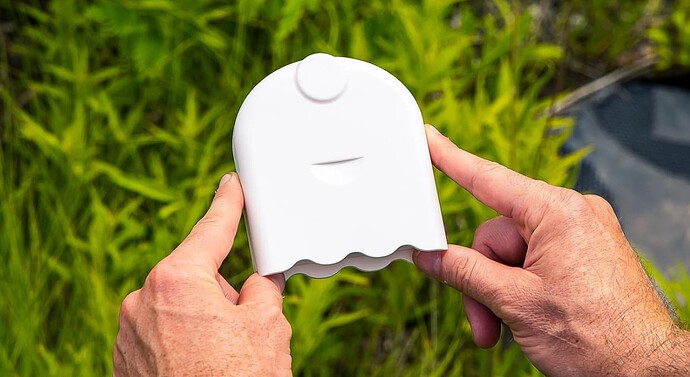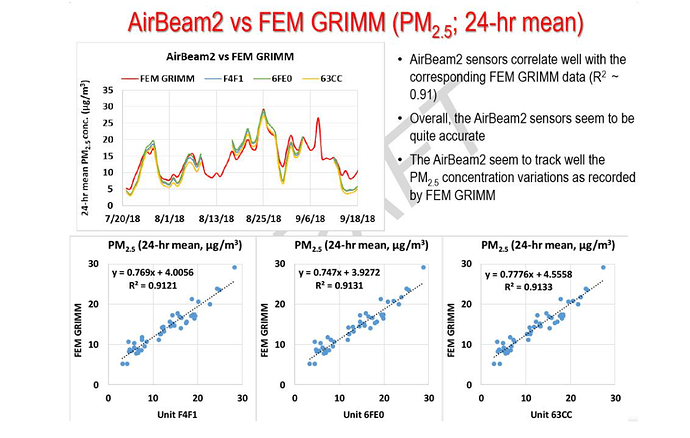When it comes to monitoring air quality, we have three types of monitors at our disposal: indoor air quality monitors, outdoor air quality monitors, and portable air quality monitors. Where the former is used to monitor the air quality in rooms, and outdoor air quality monitors are best used mounted outside your house, portable air quality monitors are perhaps the most interesting of the three. Why? Simply because they can be taken anywhere with you.
Air pollution, and therefore air quality, can be hyper-localised, and even from street to street, it’s not uncommon to see very significant differences in air quality. This can be for various reasons, but a few common ones are proximity to traffic, street food vendors, other open fires, and wind direction. For the past few years, I’ve been based in Vietnam, Thailand, and the Philippines, and I’ve noticed that in each of these countries, air quality can vary massively, even within a few hundred metres. Although in these countries, this difference tends to be because of street food vendors (which emit a large amount of smoke), every country has differing air quality depending on location.
Portable air quality monitors are particularly insightful because they allow you to identify these pockets of air pollution and learn, in further detail, what causes them. If you follow a certain route to work or school every day, knowing pollution hotspots on the way can also allow you to take proactive measures to protect yourself. Whatever your reasoning is, portable air quality monitors are handy tools!
The issue with portable air quality monitors is that there are few choices that balance convenience, accuracy, and price. Luckily, there are a few decent options, and I want to discuss those today!
Note: this post will not discuss CO2-only monitors. For information on them, please refer to this post:
Before we discuss the options I would currently consider worthwhile, I’ve noticed an interesting trend of portable air quality monitors being discontinued - much more frequently than other air quality monitors. For example, a few years ago, I reviewed Flow 2 from Plume Labs, and I spoke well of it at the time (since then, I’ve learnt a lot more about the field, and I would no longer recommend it. Since it’s discontinued, however, I don’t see a need to update my review). While I imagine the bad accuracy report from AQMD didn’t do it any favours, I was surprised to see this monitor cancelled as it did well in other areas and could surely have been improved.
Anyway, a few other portable monitors such as this one exist, but I haven’t yet tried them. I have also heard about durability issues with the company’s monitors, so I’m very hesitant to recommend looking into them. Luckily, a few good options are on the market, so let’s discuss them instead!
The first monitor, which is easy for me to recommend, is the Atmotube Pro. This small monitor has been around for many years, and I still use mine. Nothing portable can beat this monitor that I’ve tried - yet! Let’s get started with what the Atmotube Pro monitors:
- Particulate Matter (PM1.0, PM2.5, PM10)
- Volatile Organic Compounds (VOCs)
- Relative humidity
- Temperature
- Air pressure
While the sensor set doesn’t stand out, I tend to focus most on particular matters regarding portable sensors. That said, it would be nice to see a NOx or even a CO sensor for plotting pollution-free paths through cities. That said, the PM sensor has performed well in AQMD’s testing, and it also got a 4.5 out of 5 score from AIRLAB. Finally, the SPS30 sensor that the device uses has earned the MCERTS certification, adhering to the rigorous performance standards for Indicative Ambient Particulate Monitors.
Overall, this set of qualifications means the Atmotube Pro has been thoroughly tested and has performed well against reference equipment in various tests. This is very impressive and one of the reasons I continue to recommend this portable air quality monitor today.
The second key reason that I love this monitor is the battery life. Where many portable air quality monitors have a battery life of < 24 hours, this device can easily last a week. It does this by decreasing the frequency of readings and having a larger battery.
The app isn’t flawless, and I wish the graphs were easier to read and that it was faster, but overall, it performs decently. For the great performance and battery life, I feel like this tradeoff is acceptable. With that said, seeing an improved app in the future would be fantastic!
Even years after my initial review, I still believe the Atmotube Pro is probably the best consumer-grade portable air quality monitor you can buy. It’s just solid, and the accuracy is thoroughly tested.
Another option for anyone who isn’t interested in the Atmotube Pro for whatever reason or just another option to consider is the Airbeam (currently on version 3). This monitor is a bit larger than the Atmotube but offers various advantages and disadvantages. I’ve been using mine for about a week, and while I’m still writing my full review, I can share some thoughts here.
This monitor uses a Plantower PMS7003, a sensor different from the Atmotube Pro and has decent performance. In fact, most of the monitors that I’ve come to rely on in my daily life use Plantower sensors such as the PMS5003 (AirGradient ONE and Open Air) and PMS6003 (Purple Air monitors). Like the Atmotube, the Airbeam has also undergone AQMD testing and has performed similarly well. While it lacks the other testing the Atmotube has, the Plantower sensors are known to perform well, and you can see PurpleAir’s test results to see how the PMS6003 compares.
The Airbeam does only monitor particulate matter (outside of temperature and relative humidity), but it does so accurately and can generally be trusted. Since the enclosure only has intakes on the bottom of the device, I imagine it would also be impacted less by wind than the Atmotube.
So, with accuracy out of the way, what are the advantages and disadvantages of this monitor over the Atmotube Pro? Well, let’s list a few of them out:
Atmotube Pros
- Fantastic battery life ( > 1 week)
- Monitors VOCs
- Arguably better app
- Smaller
- More thoroughly tested sensor
Airbeam 3 Pros
- Works over WiFi or Bluetooth, meaning it can double as a static outdoor monitor
- Weather resistant
- Internal SD card to store data
- Optional SIM card
- Open source
The Airbeam has enough battery to last around 17 hours (I believe this is over Bluetooth) and an accompanying app that works quite well. One feature I love, which the Atmotube app lacks, is that you can visualise the air quality data on a map - super handy! However, it is a bit more pricey.
Overall, I feel that the Atmotube Pro is the better monitor if you want ease of use and only portability (and don’t mind using only Bluetooth). However, the Airbeam is definitely a more powerful monitor with standalone mode, and it can double as an outdoor monitor. Really, you can’t go wrong with either monitor, and it’s up to you to choose what suits your needs best.
There are other portable air quality monitors out there, and I will be adding them to this post in the future! If you think I’ve missed anything, please let me know!




